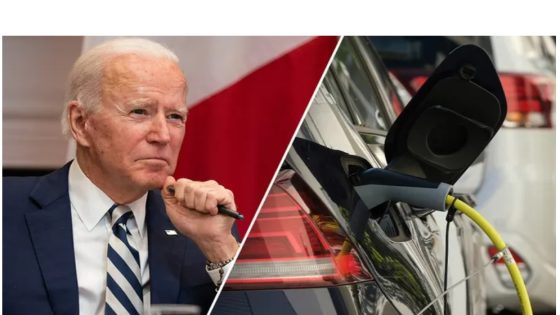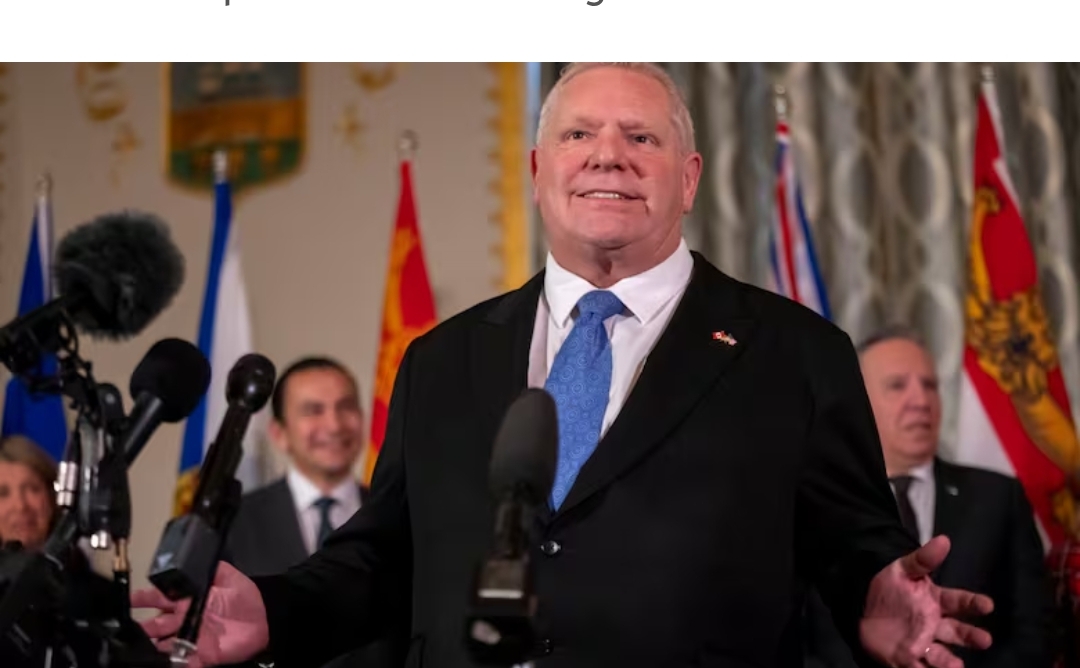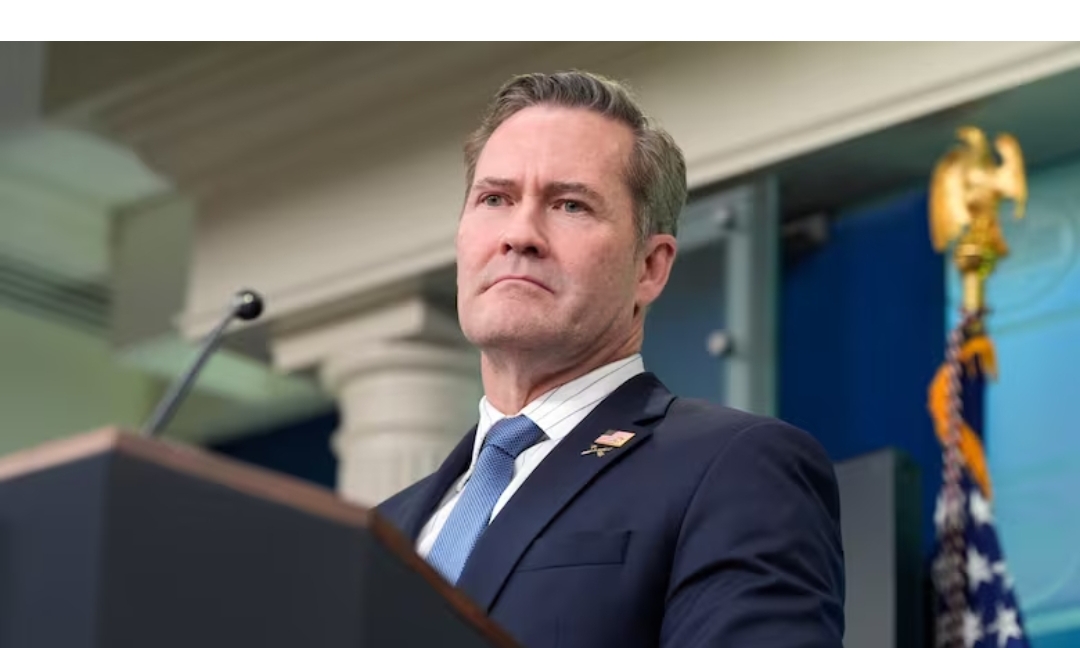Assahafa.com
The Biden administration is expected this week to finalize highly anticipated regulations targeting gas-powered vehicle tailpipe emissions, considered the tip of the spear in its efforts to electrify the transportation sector.
The Environmental Protection Agency (EPA) is slated to issue the final rulemaking — which officials have boasted will incentivize greater adoption of electric vehicles (EV), but which opponents have criticized as a de facto mandate — as soon as Wednesday, industry sources told Fox News Digital. The regulations, a key part of President Biden’s climate agenda, would ultimately force automakers to more rapidly expand electric options in their fleets beginning in a matter of years.
“It certainly won’t do anything to improve human health. It won’t do anything to reduce pollution,” American Energy Institute president and CEO Jason Isaac, who has researched the EV market, told Fox News Digital in an interview. “We’ve proven in this country that we’re already a world leader in clean air. All it’s going to continue to do is push the costs of electric vehicles on to purchasers of internal combustion engine vehicles.”
“This is purely being done for campaign reasons — to really appease the leftist large donor base that are the climate alarmists that are driving this movement towards really what is a forced energy transition, which is just increasing the cost of everything,” Isaac added.
17 RETIRED MILITARY OFFICIALS RAISE ALARM ON BIDEN’S ELECTRIC VEHICLE PUSH
President Biden is pictured next to Environmental Protection Agency Administrator Michael Regan. (Getty Images)
Overall, under the proposal, which EPA unveiled in April 2023 and will go into effect in 2027, the White House projected that 67% of new sedan, crossover, SUV and light truck purchases would be electric by 2032. In addition, up to 50% of bus and garbage truck, 35% of short-haul freight tractor and 25% of long-haul freight tractor purchases could also be electric by then.
The White House said the proposal, which represents the most aggressive proposal of its kind ever proposed, would “accelerate the clean vehicle transition” and reduce oil imports by 20 billion barrels. Biden and climate activists have taken aim at the transportation sector over its high emissions profile — it alone produces roughly 29% of America’s greenhouse gas emissions, federal data shows.
VIRGINIA DEMOCRATS UPHOLD STATE’S EV MANDATE DESPITE GROWING OPPOSITION: ‘DEFY COMMON SENSE’
In January, EPA submitted its final regulations to the White House for review, and in recent weeks, the Office of Management and Budget has hosted a flurry of meetings with energy industry officials, business leaders, automakers and environmental activist groups, according to federal filings.
And last month, the New York Times reported that the agency had endorsed its so-called “alternative C” approach, which would loosen the rule implementation between 2027-2030, the early years of the proposal, before aggressively ramping up in 2031 and 2032. Industry groups said such an approach would be just as damaging for consumers, since the end result would remain unchanged.
President Biden previously set a goal of ensuring 50% of car purchases are electric by 2030. The EPA regulations would go even further, ramping up EV sales to a 60% market share by then.
“President Biden has been clear since 2020 that he intends to use his federal agencies, and the State of California, to eliminate sales of new gas cars,” American Fuel & Petrochemical Manufacturers president and CEO Chet Thompson, whose group has advocated against EPA’s tailpipe regulations, told Fox News Digital in a written statement.
“While multiple administration policies push us toward this end, the EPA’s passenger vehicle standards will do most of the damage on their own — requiring approximately 70% of new car sales to be electric in less than eight years,” Thompson said. “This policy is bad for consumers, the economy and national security. It will sacrifice our hard-won U.S. energy strength for even greater dependence on China and the EV battery and mineral supply chain China controls.”
NEW REPORT UNMASKS TRUE COSTS OF ELECTRIC VEHICLE MANDATES: ‘REMAIN MORE EXPENSIVE’
He added that, for consumers, EPA’s regulations will “feel like a ban” and vastly restrict both their access to, and ability to afford, new gas cars, trucks, SUVs and traditional hybrids. Thompson further warned the EPA doesn’t include any “offramp” in its proposal in the event that U.S. charging and power infrastructure isn’t ready for such a rapid electrification of cars.
According to the Alliance for Automotive Innovation, an industry group that represents major automakers, 9.3% of total car purchases in the U.S. last year were electric or plug-in hybrid, up from 7% in 2022. That uptick was driven largely by purchases in California and urban areas where the majority of EV purchases are made.
Even factoring in generous federal and state subsidies, the average cost of an EV is about $52,500, according to the Alliance for Automotive Innovation, while the average gas subcompact car costs $24,000. (Justin Sullivan/Getty Images)
At the same time, EVs remain far more expensive than traditional gas-powered cars. Even factoring in generous federal and state subsidies, the average cost of an EV is about $52,500 while the average subcompact car costs $24,000.
In a memo crafted by the Alliance for Automotive Innovation late last week and reviewed by Fox News Digital, though, the group emphasized that loosening tailpipe emissions rules in the early years of the proposal would allow for companies to meet federal goals.
BEIJING-BACKED GREEN ENERGY FIRM IS EXPANDING IN US, POSING SERIOUS NATIONAL SECURITY RISK: REPORT
“Think of the upcoming rule like a six-year curve with higher electrification targets every year. Pay close attention to the administration’s EV adjustments in the earlier years. That’s the story,” the group wrote.
The group also raised a number of questions related to how EPA will factor in plug-in hybrids, which it said consumers favor, but which EPA neglected to include in its April 2023 proposal. And it urged EPA to issue the regulations in coordination with other federal agencies, such as the Department of Energy and Department of Transportation, which are expected to finalize their own rules impacting the EV transition.
Reps. Tim Walberg, R-Mich., (left), and Andrew Clyde, R-Ga., (right) introduced the Choice in Automobile Retail Sales Act in July. The bill was passed on a bipartisan vote in December. (Bill Clark/CQ Roll Call via Getty Images | Anna Moneymaker/Getty Images)
And EPA’s regulations this week are likely to garner significant pushback from lawmakers who have already unleashed a number of efforts to curb the federal government’s authority on the issue. In December, the House voted 221-197, with five Democrats joining 216 Republicans, to pass a resolution nixing the EPA’s proposal, but that bill has yet to receive a Senate vote.
“President Biden has made his intentions clear,” Rep. Randy Feenstra, R-Iowa, recently told Fox News Digital. “He would rather force American families — who are already facing financial hardship under the weight of inflation spurred by trillions in wasteful government spending — to buy electric vehicles to advance his Green New Deal agenda than allow folks to choose the best car or truck for their families, businesses, and farms at an affordable price.”
EPA didn’t respond to a request for comment, but said in February that it is committed to finalizing a tailpipe standard that is “readily achievable, secures reductions in dangerous air and climate pollution and ensures economic benefits for families.”
Source: foxnews














